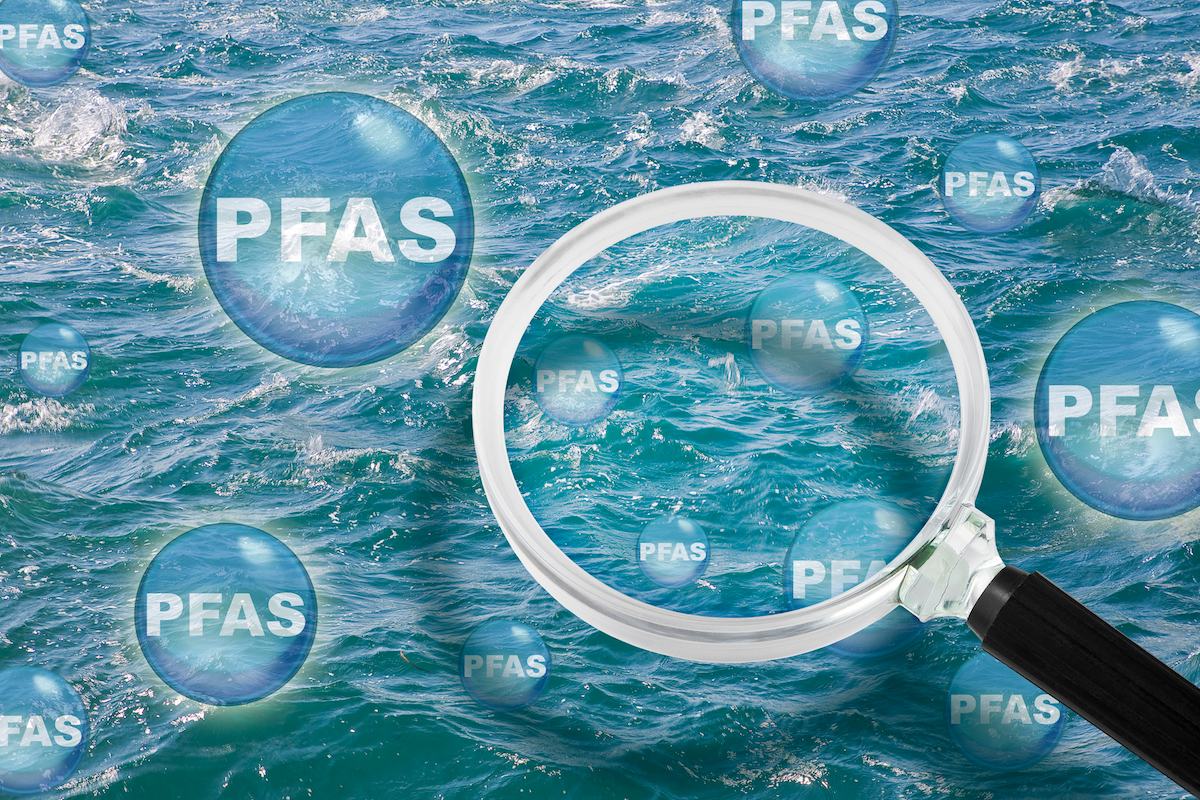KINGSTON, R.I. – April 25, 2024 – The State of Rhode Island mandated testing of public drinking water systems for per- and polyfluoroalkyl substances – better known as PFAS – starting last year. Now, the University of Rhode Island’s Water Quality Program is launching an initiative that will research the prevalence of PFAS in other sources, including ground and surface water.
Per- and polyfluoroalkyl substances have been used for decades in consumer products such as coating on non-stick cookware, clothing and carpets to prevent stains, and in firefighting foam. Called “forever chemicals,” the substances degrade slowly in the environment. Human exposure is widespread and may lead to such health impacts as cancer and reproductive issues.
As part of a nationwide effort to better understand these substances, the URI Water Quality Program will evaluate the prevalence of PFAS and its sources and pathways in two small or disadvantaged Rhode Island communities at the sub-watershed level. Funded by a three-year, $1.5 million grant from the Rhode Island Department of Health and the Environmental Protection Agency, the project will explore best practices for treatment of PFAS and an outreach and engagement program for residents in the two pilot communities. The plan will not only be applicable in Rhode Island, but nationwide, said Lisa Philo, co-director of URI’s Rhode Island Nonpoint Education for Municipal Officials (NEMO).
“The range of expertise we have in the Water Quality Program makes us particularly well-suited to investigate this problem through a variety of lenses,” said Philo. “Our goal is to examine the prevalence and possible sources of PFAS in two pilot communities and to use that information to determine how best to tackle the problem and to engage the public so they understand their actual risks. We’ve been working on drinking water, wastewater, and watershed issues for decades, and that experience will be critical as we tackle these emerging contaminants of concern.”
Including NEMO, the initiative brings together four programs in URI’s Water Quality Program, which is part of the URI College of the Environment and Life Sciences and the Cooperative Extension. The programs have a long history of working together.
While NEMO has a track record of working with local officials, its sister programs bring their own expertise in water quality monitoring, research and outreach. Watershed Watch deploys an army of volunteers each summer to monitor the state’s ponds, lakes, rivers, streams and coastal waters. The Home*A*Syst program trains homeowners with private wells, and the Onsite Wastewater Resource Center provides research and training on private septic systems. The project will also collaborate with URI’s Environmental Data Center, a geospatial data analysis research lab.
“At its root, one of the strengths that this project plays to is the fact that our Water Quality Program has always relied upon URI scientific research to fuel decisions that we make and the information that we translate and disseminate for the public and decision-makers,” said Philo. “We have a longstanding history of collaboration with various departments at URI and this project will be no different.”
In the fall, URI researchers will identify the two communities – such as a school district, senior housing complex or mobile home park – with differing levels of PFAS contamination in the public water system that serves them.
The selection process will also take into account the size and makeup of the communities’ populations. “For this project, the EPA strongly favors that the funds be applied in small communities – usually fewer than 5,000 people – that include marginalized or disadvantaged populations,” she said.
In each community, URI researchers will test multiple areas – private wells, small public water systems, surface waters, and onsite wastewater – to evaluate the prevalence and sources of contaminants and understand the pathways contaminants travel in surface and groundwater. While the state monitors public drinking water systems, the URI project will also test private drinking water sources in the sub-watershed to understand potential sources of the contaminants in the home.
“If we’re dealing with a school district that’s been identified as having actionable levels of PFAS, what do the houses, commercial buildings, or industry around the school look like? Also, our goal will be to identify 40 residences that are willing to let us sample their private well water and wastewater to see what we find,” Philo said.
The end goal of the project is to determine the best drinking water treatment options for PFAS in small systems and private wells that are above EPA limits in the two communities – and develop an education and outreach program that informs the communities about PFAS effects on human health and provides best practices in supporting homeowners making informed decisions to protect the health of their families.
“The news about PFAS sounds very alarming, but the goal is not to alarm people,” she said. “It is to make them aware of the issue and empower them with choices if they find out their water system contains PFAS.”

